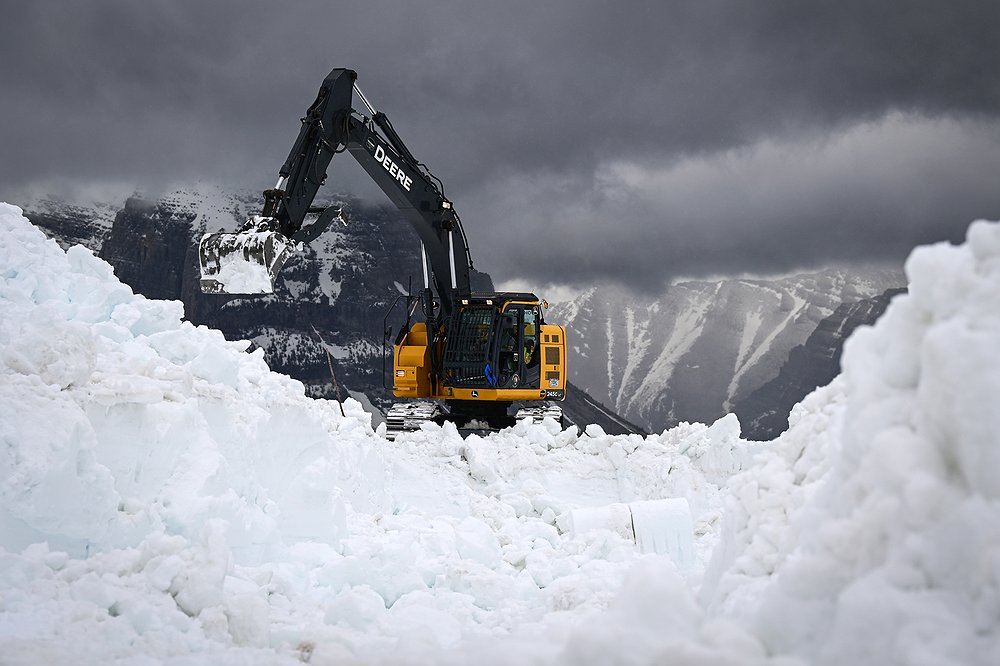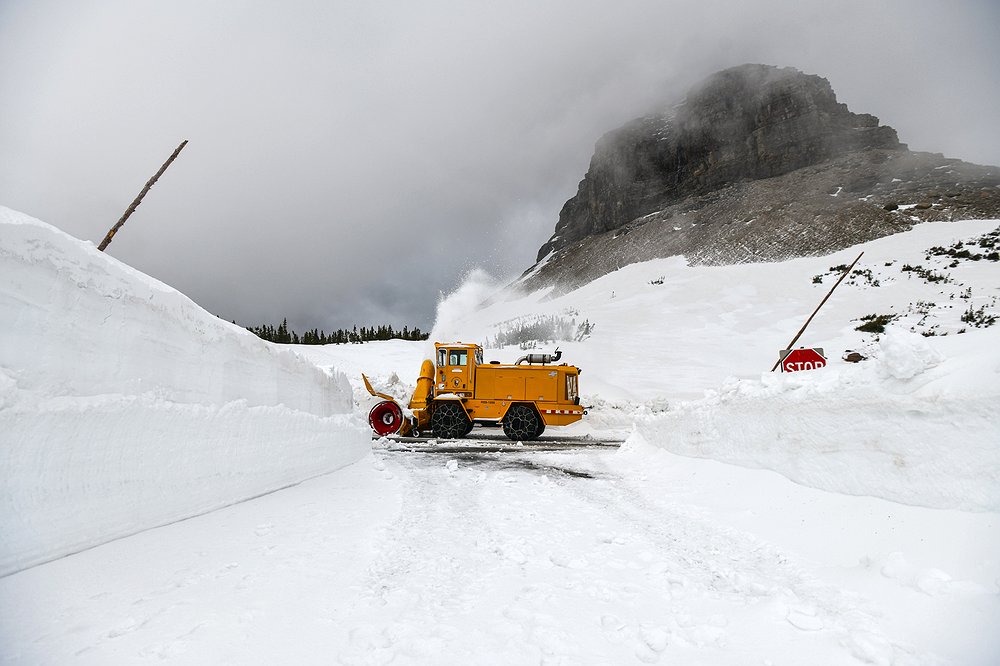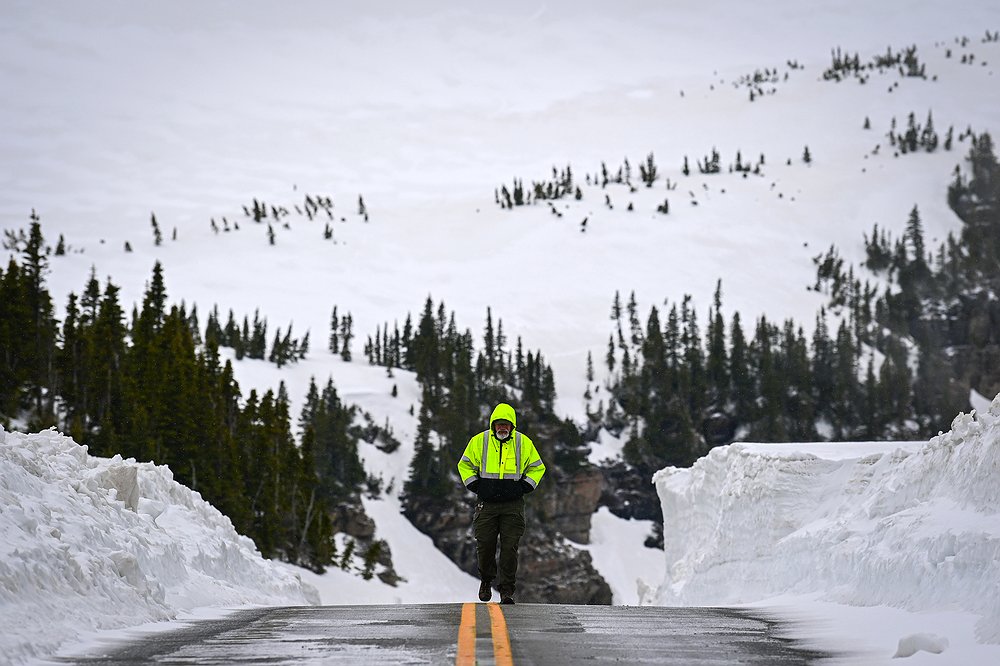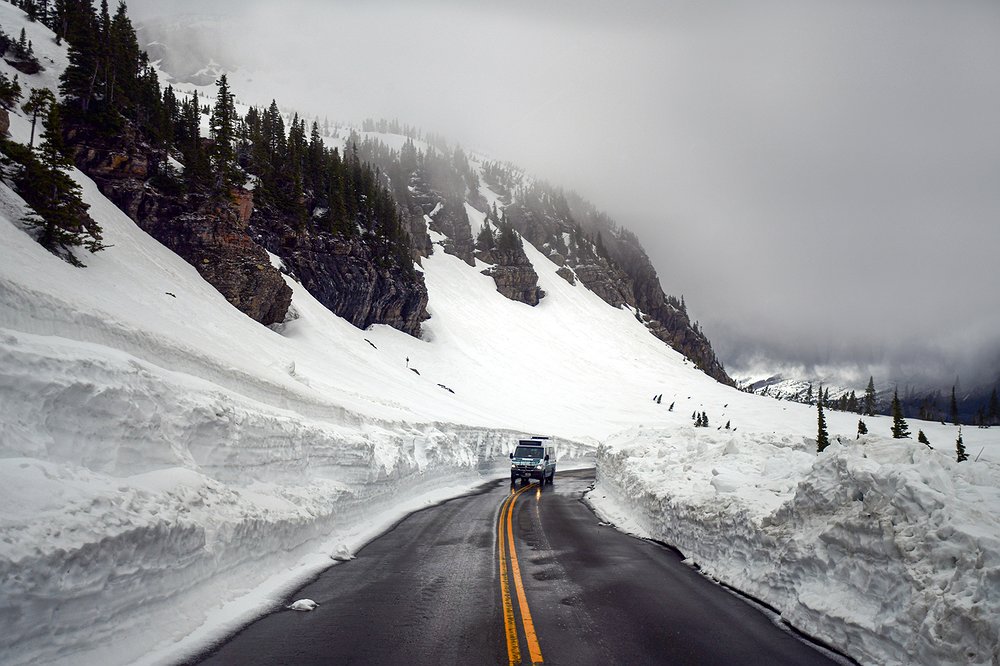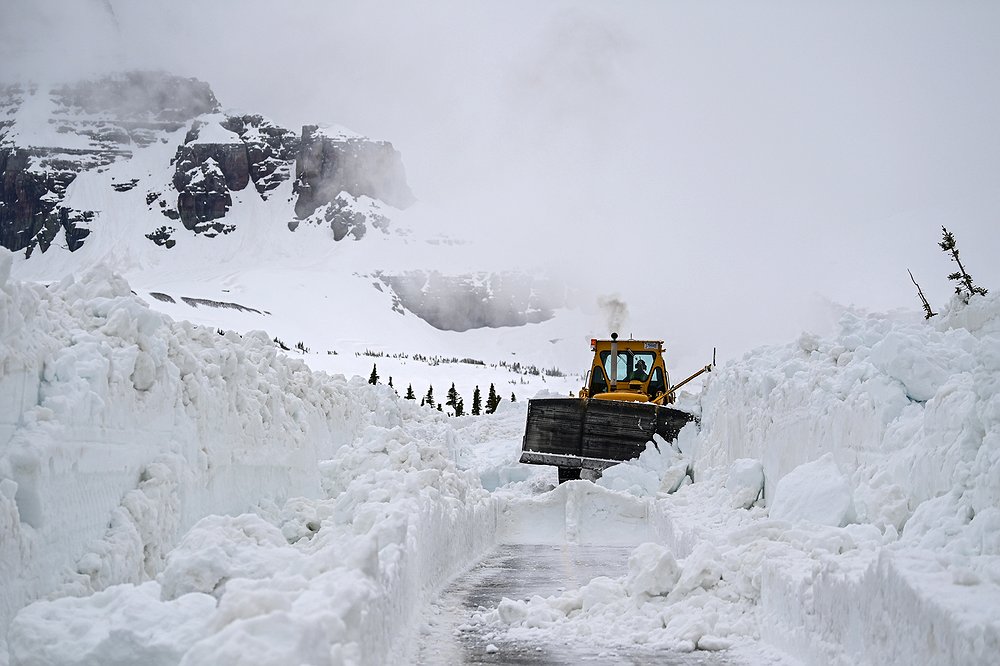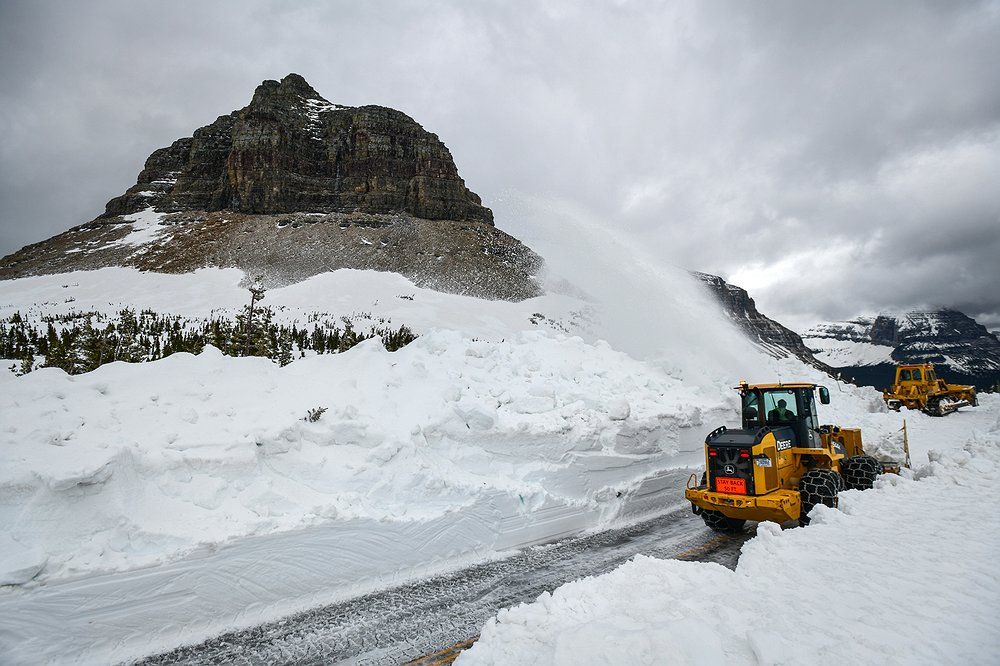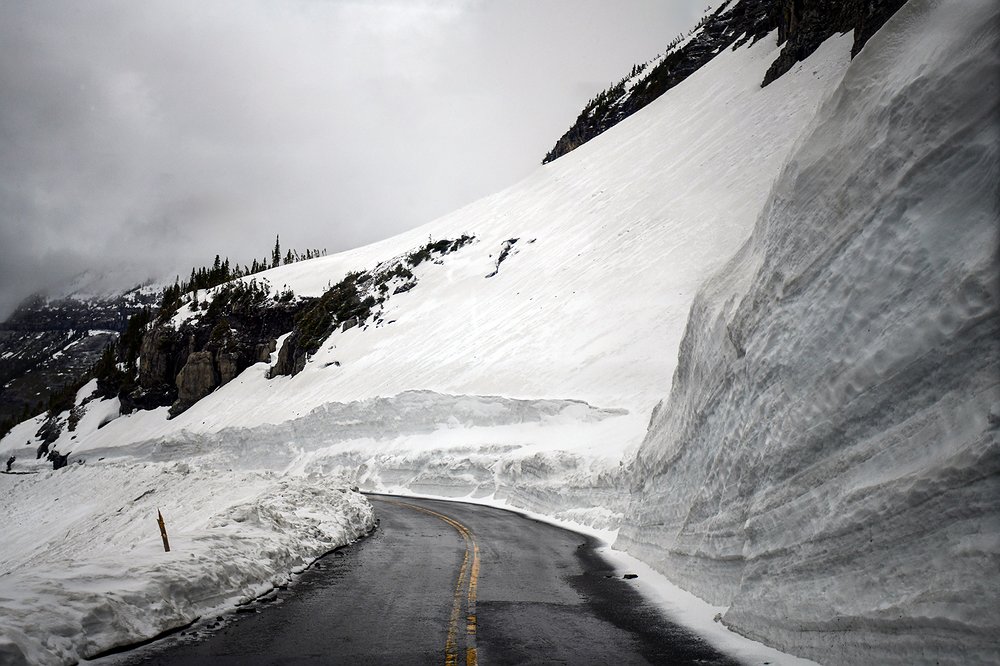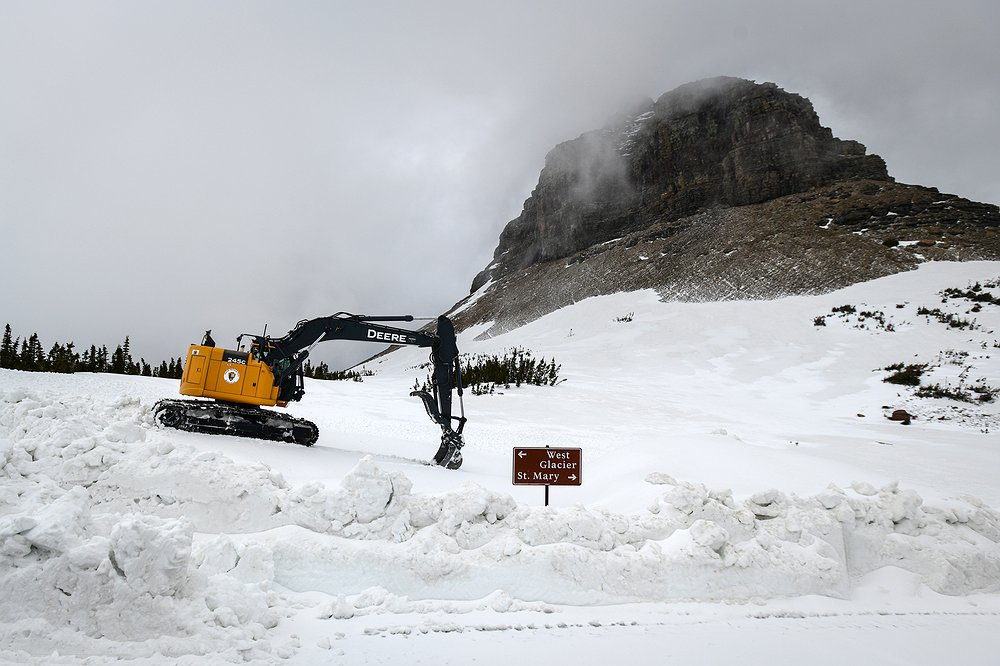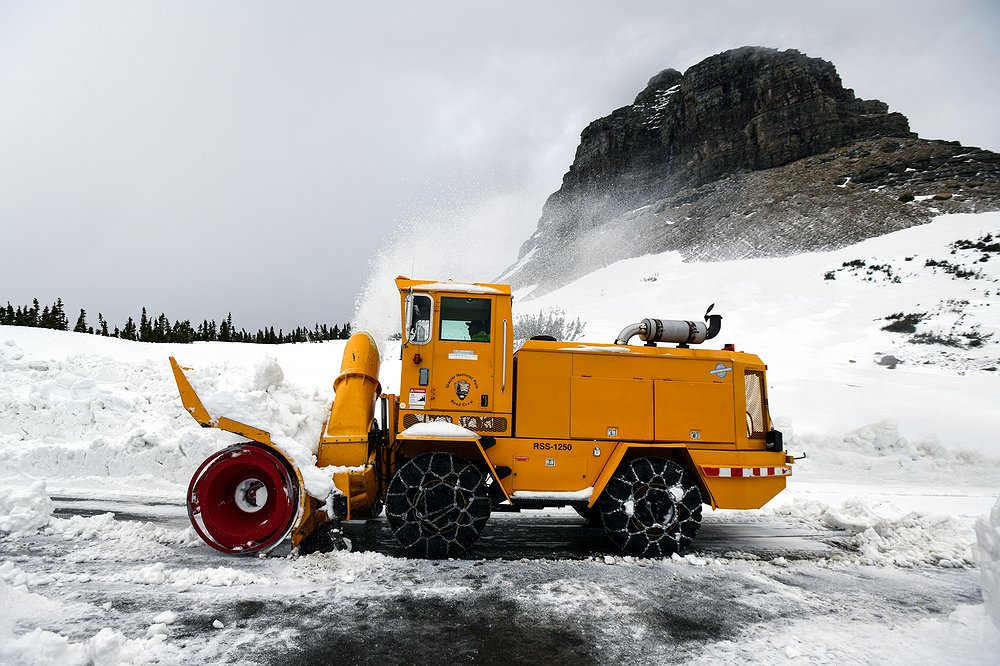Glacier National Park plow crews grapple with deepest snow in more than a decade
TAYLOR INMAN | Hagadone News Network | UPDATED 1 year, 6 months AGO
Taylor Inman covers Bigfork and the north shore for the Bigfork Eagle and hosts News Now and other podcasts for the Daily Inter Lake. Originally from Kentucky, Taylor started her career at the award-winning public radio newsroom at Murray State University. She worked as a general assignment reporter for WKMS, where her stories aired on National Public Radio, including the show “All Things Considered.” She can be reached at 406-758-4440 or at [email protected]. | June 2, 2024 12:00 AM
It’s feeling like spring in the valley, but at Logan Pass, Glacier National Park road crews are still in the thick of winter snowpack — the deepest seen in more than a decade, according to officials.
“There's still a lot of work to do up here,” Glacier National Park Roads Supervisor Brian Paul said as he looked over a buried Logan Pass Visitor Center and plows working their way through deep snowpack just beyond the parking lot exit on the Going-to-the-Sun Road. It’s the deepest snow they’ve measured at the pass in the early spring since 2011, he said.
Currently, west side plows are working on the Big Drift just past Logan Pass — a section of the road that gets up to 80 feet of snow accumulation in the wintertime. Paul said east side plow crews are just below the east side tunnel, and will soon join the west side crews on breaking down the Big Drift in about a week’s time.
Warmer spring conditions in lower elevations led to a quick start to plowing this season. Paul said his crew of four plowed up to the Loop before their seasonal staff arrived for the year, using one plow instead of the usual two.
The work got more challenging once they began on the alpine section of the road. The avalanches this year have felt Sisyphean; crews hurry down the road as warm afternoon temperatures cause snow to start sliding. Paul said they usually have to clear avalanches to get home.
“The last avalanches were on the 13th of May last year, and yesterday we had seven. We keep re-plowing or pre-plowing to follow-up in the morning, we’ll start working and then we'll have to plow ourselves out in the afternoon,” Paul said.
They typically begin their drive up at 6 a.m. and try to come down around 2-2:30 p.m. But as tourists arrive for the season, it can be hard to know how long it will take to get through early morning traffic on the lower section of the Sun Road open to cars and cyclists, he said.
“The further we go up, the longer the drive time to get up, so our workdays get slower the higher we get up here,” Paul said. “When the east side crew is here and everybody's working up here, things tend to speed up; and they have a shorter drive,” Paul said.
Plowing the Big Drift isn’t possible by starting from the bottom, so crews dig from the top. Paul said they pick their way across the rock face with the excavator and dig their way down, removing snow from the rock wall above so it doesn’t come down on visitors at a later date. He said they do this, digging down, until they reach the pavement.
Driving equipment that weighs thousands of pounds on top of snow is as harrowing as it sounds. Occasionally throughout the plowing of the road, water run-off from the side of the mountain can form “caverns” underneath the snow — this sometimes results in machines falling into large holes, occasionally big enough to ensnare an entire bulldozer. It’s not necessarily dangerous, park officials said, but is definitely enough to make your stomach drop.
Paul said it’s hard to quantify which sections of the road are the hardest to plow, “it all can be hard,” he added. But the Big Drift and Rim Rock are two of the most challenging, he said.
Safety standards are in place, though, particularly for monitoring avalanches. Zachary Miller works for the U.S. Geological Survey as the lead forecaster for the Going-to-the-Sun Road’s spring snow and avalanche program. He said it’s been a pretty average year on the road in terms of avalanche hazards.
“We began the season at about 80% of average snowpack in the upper elevations, according to the Flattop Snotel Site, and generally had a relatively normal, if not warm April, that with low elevation snow allowed the crew to progress rapidly up the road and little avalanche hazard because of the relatively low snowfall amounts,” Miller said.
He said getting into May, the region received a variety of storms that increased avalanche hazard early in the month. This was followed by warming in between that also increased avalanche hazard, and then wrapping up the month with a continued cold and wet cycle that added more snow on top of an old solidified base, according to Miller.
That’s causing some pretty regular avalanches along the road, but Miller said the actual hazard this year is very similar to most years as it ebbs and flows. He said officials are primarily concerned with new snow hazards in the short-term or during big melting periods where water percolates through the snowpack, releasing larger and deeper avalanches.
Glacier National Park Chief of Facilities Maintenance Jim Foster said even though valley residents saw warmer temperatures, it didn’t affect the snowpack at those elevations. And just because they got a quick start to plowing this year, it doesn’t mean they wouldn’t run into other obstacles along the way.
“This is why we don't predict when we're going to open up the Going-to-the-Sun Road. We absolutely would have gotten ourselves in a pickle back in April when everything was warm and we were up really high and everything was looking good. You can't predict the storms that you'll get, we've had cycles of storms, and our guys have plowed through those shoots five or six times,” Foster said.
The Going-to-the-Sun Road opened fully for the season on June 13 in 2023, the earliest opening since 2005. In 2022, the road opened July 13.
For more information about snow plowing operations along the Going-to-the-Sun road, visit www.nps.gov/glac/.
Reporter Taylor Inman can be reached at 406-758-4433 or by emailing [email protected].
ARTICLES BY TAYLOR INMAN

Whistling Andy Distillery celebrates 15-year milestone
Montana’s oldest distillery looks back on humble beginnings and more than a decade of serving high-quality, handcrafted spirits.

Logan Health primary care providers file to unionize
Nearly 60 primary care physicians, nurse practitioners and physician assistants working at Logan Health clinics in Northwest Montana have filed a petition with the National Labor Relations Board to unionize.

Logan Health primary care providers file to unionize
Nearly 60 primary care physicians, nurse practitioners and physician assistants working at Logan Health clinics in Northwest Montana have filed a petition with the National Labor Relations Board to unionize.











